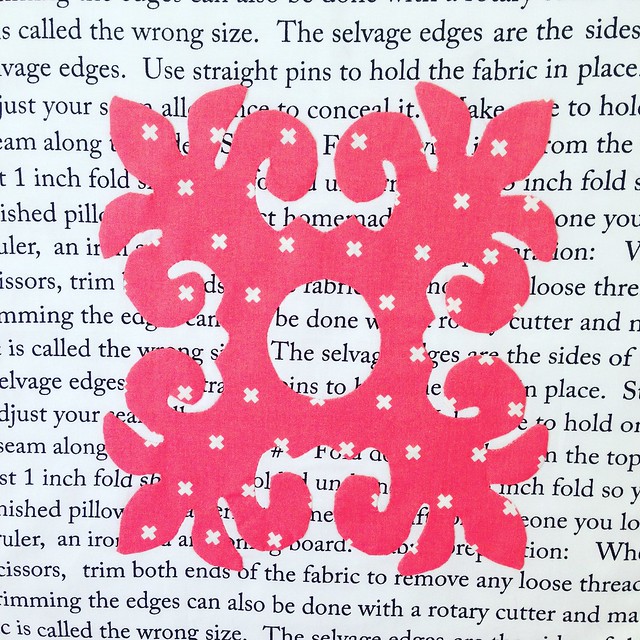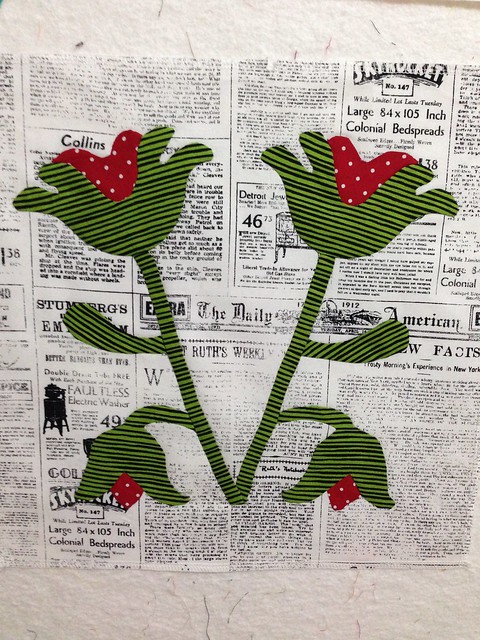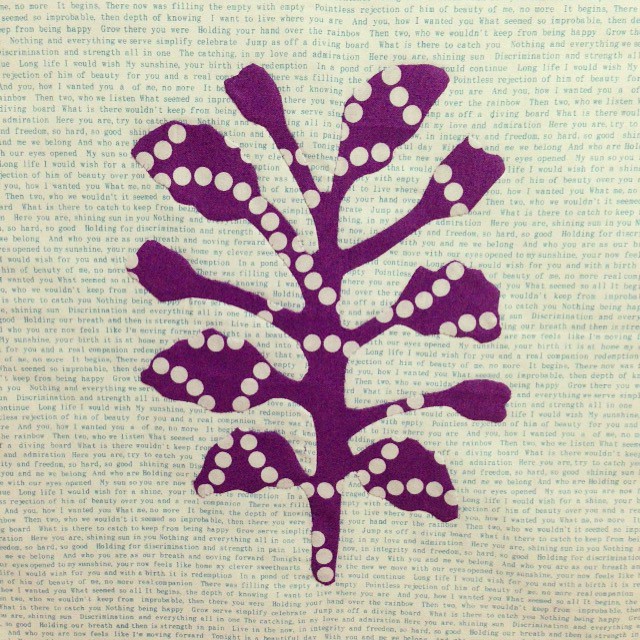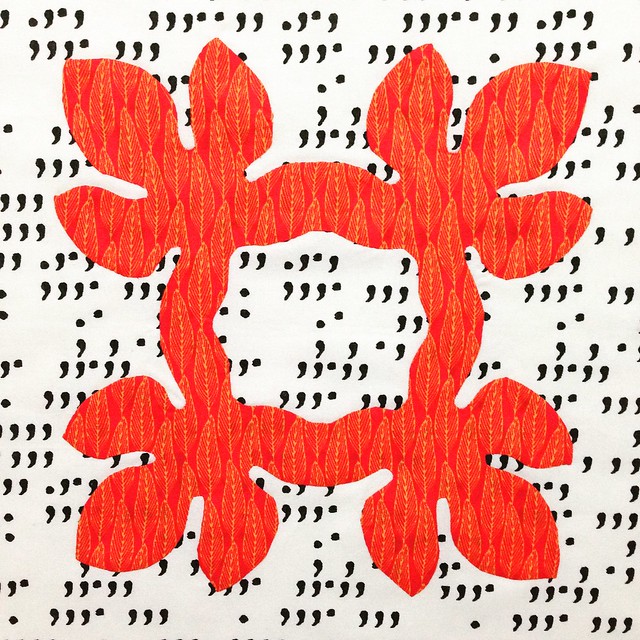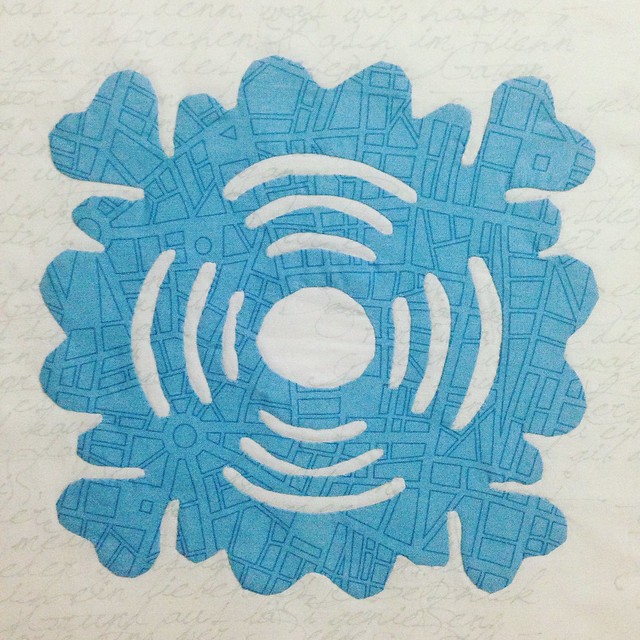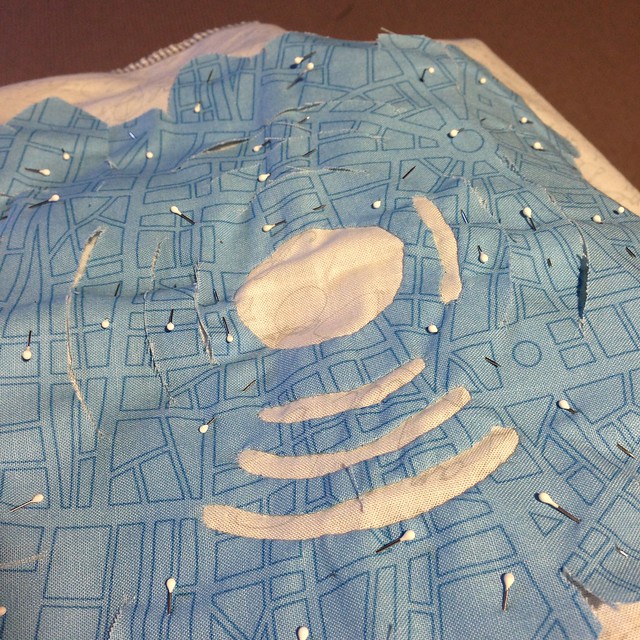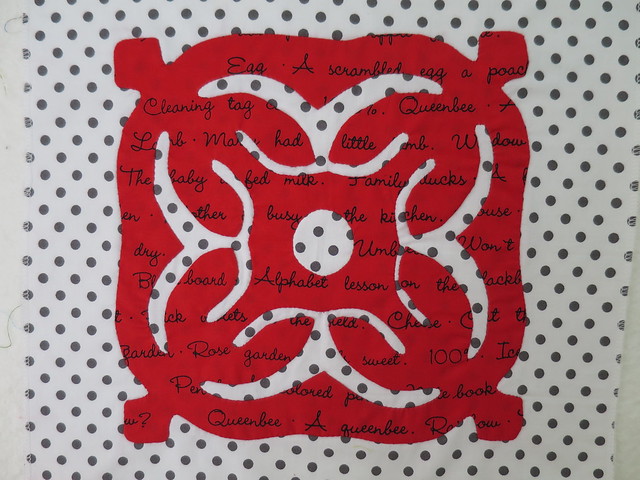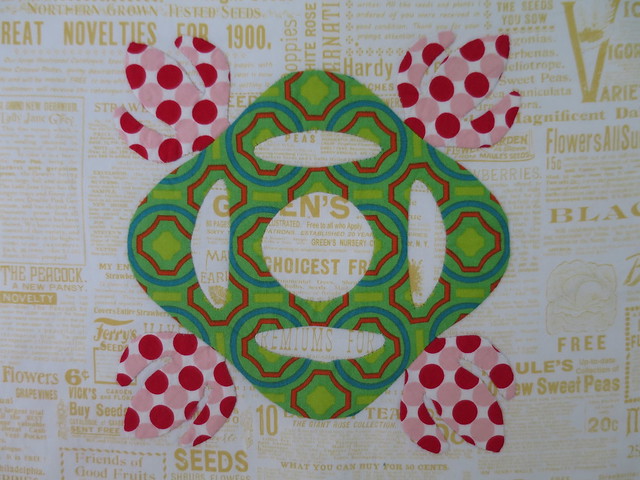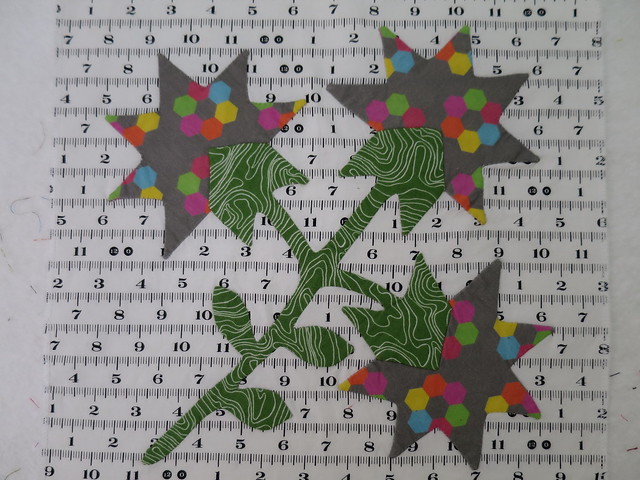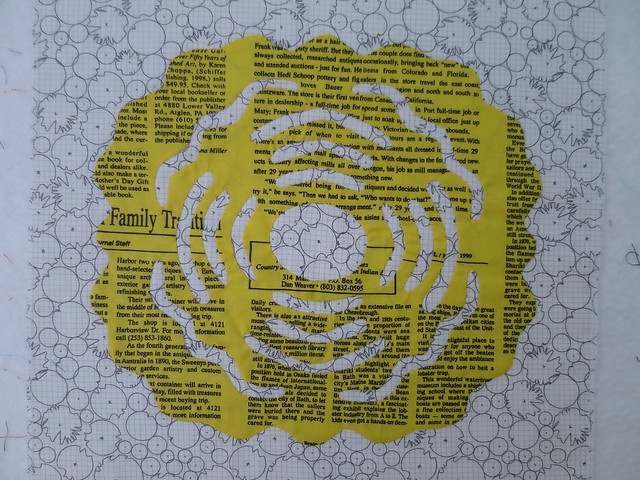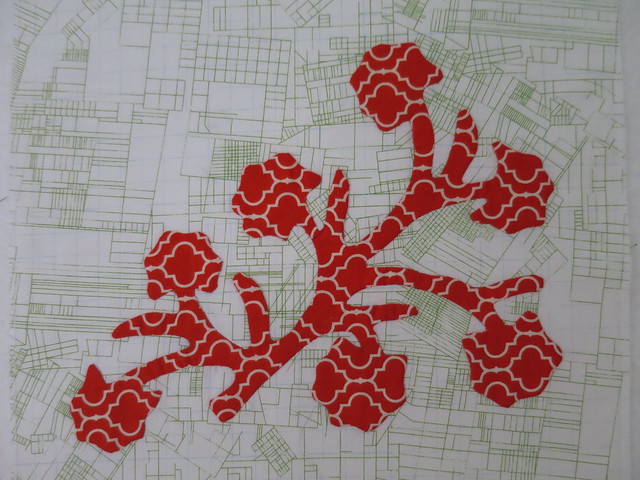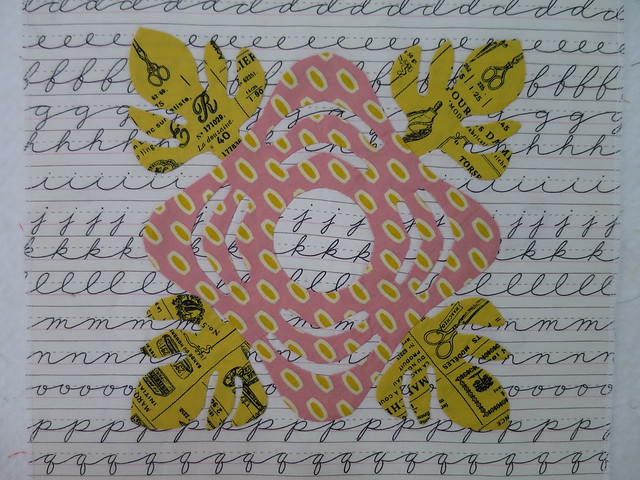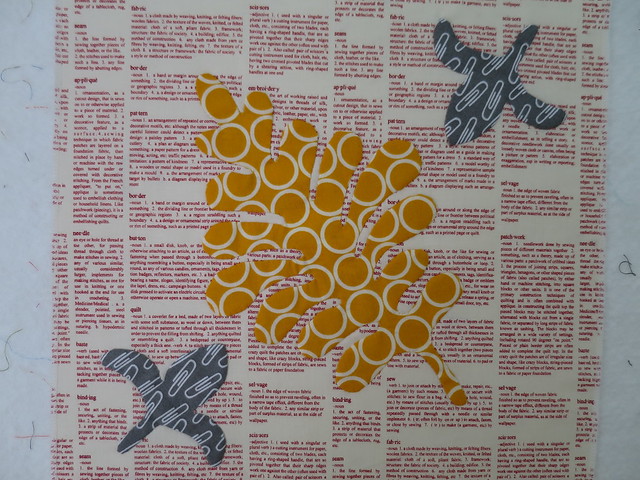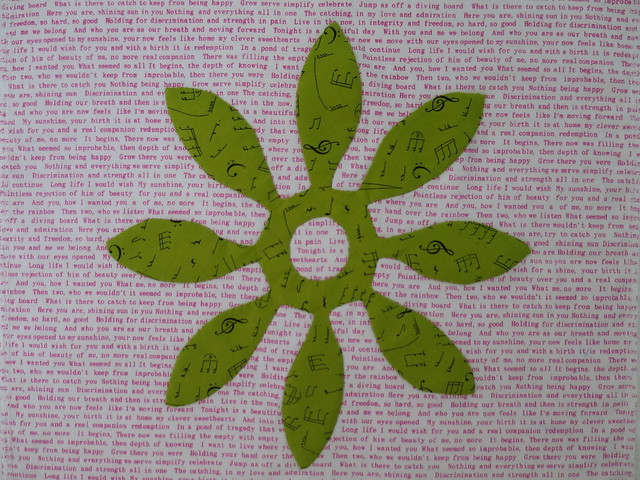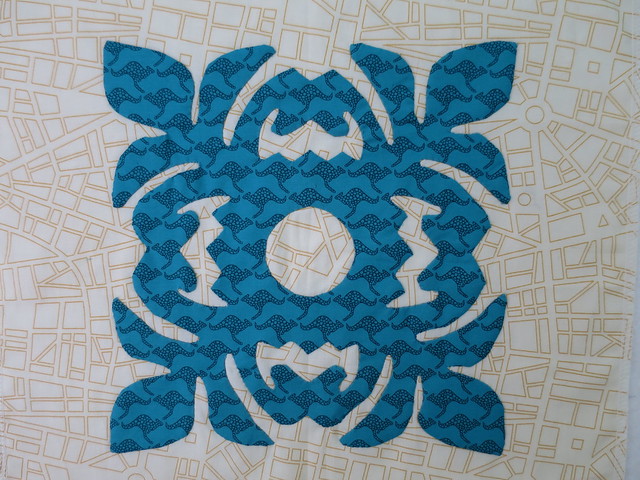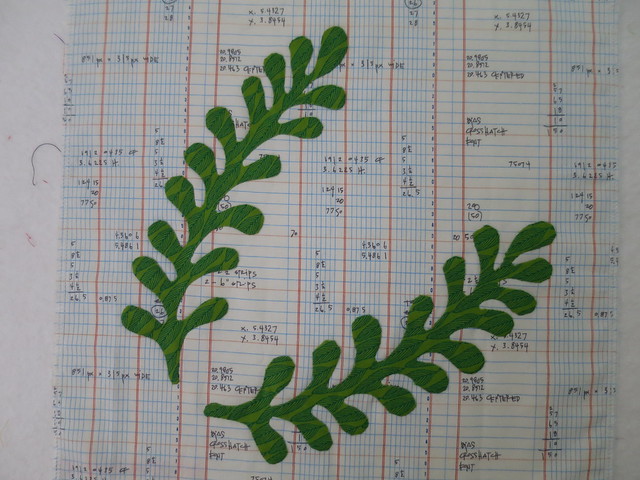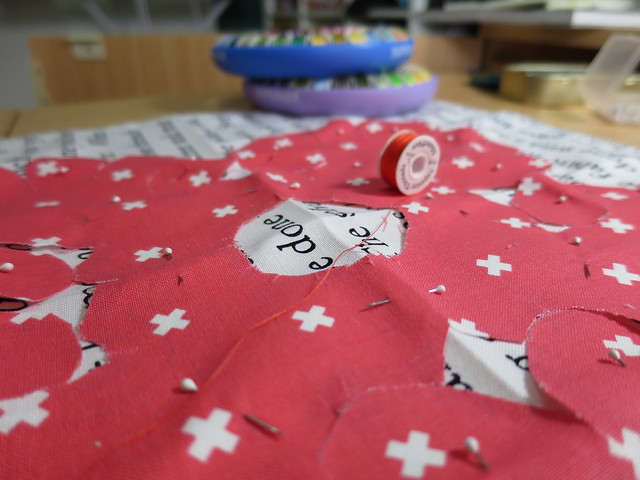I was making a Project 48 block last night where the instruction was to applique the EPP to a background fabric. It's something I do quite often in my EPP projects, but I find when I explain the concept to people, they sometimes don't understand how I do it, or how easy it is. So on finishing this block, I thought I'd do a little photo tutorial to show you.
This technique works with either blocks, or entire quilts, or side strips.
(And I'll apologise now for the state of my hands and the macro shots. I've been gardening like a mad woman the last couple of weeks so my hands are a mess; and my little Canon camera has a mind of its own on the macro setting, giving me a horrible glamour filter each time. It's like a freaking Doris Day movie every time I look at the photos. Probably best given the state of my hands, but sorry about that.)
So this is your finished EPP block, unpressed but still gorgeous.
And here is the back of it.
Give the back a bit of a press with a hot steamy iron. Don't push back and forth. PRESS. You want to put a permanent crease in those outer shapes, especially.
If you've glue basted as I have, take a cuticle stick (one of the wooden ones you get in packs of 3 at Priceline) and gently use it to lift the fabric from the paper. It will kind of pop.
If you have used a scant amount of glue, kept the glue away from the edge, and used a decent seam allowance, this will be easy. If you haven't, then you're doing EPP wrong. Sorry, but you are. I'll come by another time and show you how to EPP properly, I promise.
Use your cuticle stick to lift out the papers as you release them from the glue.
Or if you have thread basted, just clip the threads and pop the papers out!
This is the back of the block after all the papers have been removed. Don't worry about the seam allowances that have lifted, because ...
... you'll get the chance to give them a bit of a press. Again, PRESS, don't move the iron back and forth. You want those seams to maintain integrity. If any of the seams move and go a bit skewiff, just use your fingers to re-position them and press them gently back into place (preferably without burning your fingers). Easy!
Grab your spray starch of choice. Mine is Crisp because I can get it easily at my IGA. Yours is probably something else a lot cooler and funkier. It doesn't really matter.
Give the front a quick spray of the starch and press with a dry iron. Do the same with the back, pressing so you don't dislodge all the fine work you have done with your seam integrity :).
Your EPP block is now prepared for the next step!
Take your background fabric, and press it in quarters and open it back out so that you have registration lines for placing the EPP on top of it.
Position your EPP on top of the background. See how it is centred perfectly?
Roxanne basting glue is your new little friend. I use the one with the steel nozzle because it makes gluing minimal and accurate. Very important!
Fold your positioned EPP block gently forward at the half way line without moving it off the position you placed it in. Gently dab a little dot of glue inside the seam line, just on the corners will do it. This is where it pays to have a 3/8 inch seam allowance on your EPP. Trust me - you do NOT want this glue anywhere near where your needle will be because it when it is hard it is damn near impossible to get your needle through it and your will curse this technique forever and ever.
When you have glue dots on all the corners, gently flip your block back to where it was originally.
PRESS the glue dry with your iron (dry iron).
Now flip the bottom half back and dot with glue again. Don't forget to also add glue at the seam allowance near the centre line. Flip it back...
...and press. The glue should now have dried.
This is how I double check it's all attached. Just kidding. But look! No pins required!
Find your best matching thread. I use Superior Egyptian cotton exclusively for all my applique because it's bloody lovely. And no one is even paying me to say that. I get it in the donuts in all the colours because I do so much applique in so many bright colours. But other people swear by Aurifil 50/2 cotton, or silk, or Superior bottom line. Use whatever you can afford and whatever suits the work you do.
As for needles I only ever use Clover Gold Applique No. 10. I tried the Hiroshima Tulip needles but they weren't as bendy for my style of applique (I swear by Tulips for EPP though). Again, use the needle that suits you the best.
Knot your thread and come in from the back. Start a little beneath the applique, and just catch a couple of threads at the seam fold.
I do a stitch every 2-4 mm. Depends on the curves an intricacy. But this is an EPP block with straight edges - every 4-5 mm will do the trick.
The points are important. Make sure you take a stitch at each one to secure it. If you don't, your points can invert when you wash or iron the block again.
And here's what the back looks like.
Keep going until the whole block is appliqued. You can choose to cut the back out if you like, later. Just carefully trim 3/8 inch inside the stitching lines with sharp scissors, making sure you don't cut through the front part.
And there you have it! Told you it was easy!
Please ask any questions in the comments below and I will answer them there. Hopefully you'll find this tutorial helpful!























